Kay Nielsen, the Danish illustrator of the Golden Age of children’s books, combined the exquisite motifs of the Art Nouveau movement with oriental influences. This selection of his illustrations showcases his application of delicate style to convey eerie suggestion with beautiful decorative effect.
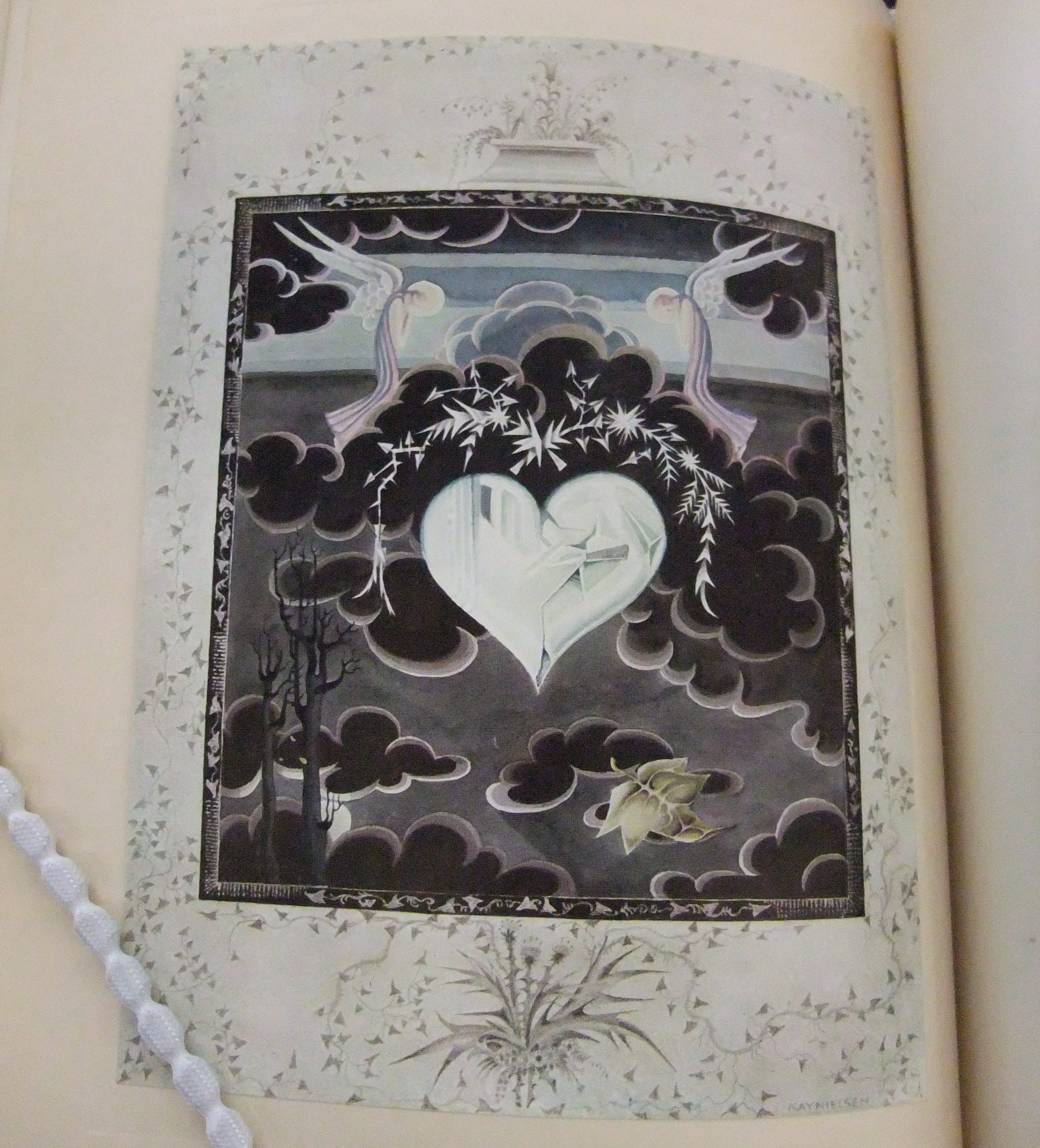
The snow queen, from Fairy tales by Hans Andersen Caption: ‘A few persons even got a fragment of the mirror into their hearts, and that was terrible indeed, for such a heart became a block of ice.’
The three great illustrators of the Golden Age of children’s book illustration were Arthur Rackham, Edmund Dulac and Kay Nielsen. Both Nielsen and Dulac relied on subtle use of colour rather than line, and both made use of oriental and other exotic touches to conjure up the romance in the children’s books they illustrated. Some highlights of the Library’s holdings of children’s books illustrated by Arthur Rackham and Edmund Dulac have been the subject of earlier blogs.
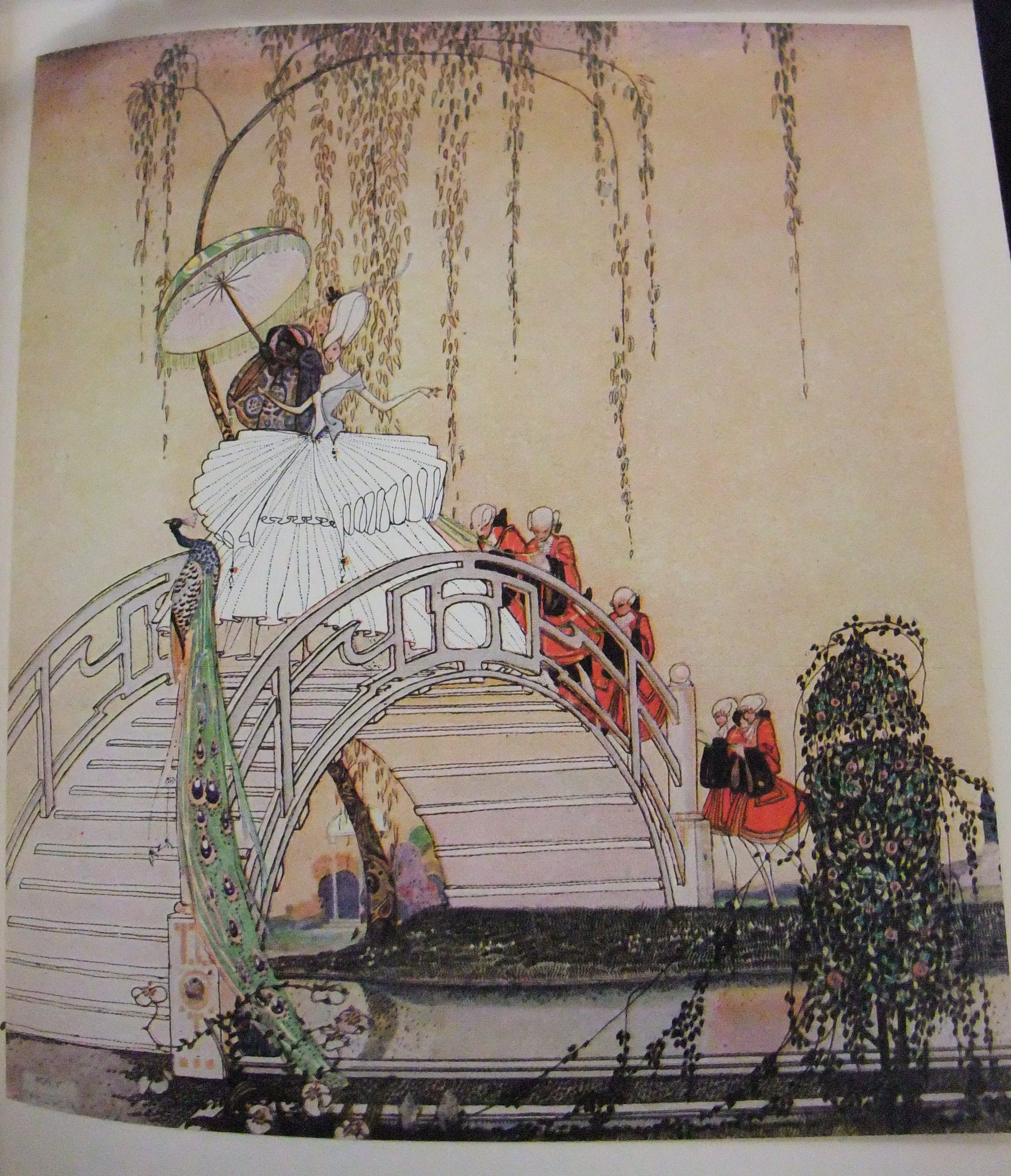
Princess Diaphanie walking in the garden, in Minon-Minette, from Twelve dancing princesses and other fairy tales
Kay Rasmus Nielsen was born in Copenhagen, Denmark in 1886 into a famous theatre family. His mother Oda was a singer and star of the Royal Theatre and his father Professor Martinius Nielsen was an actor and manager of the Dagmartheater. Even as a child Kay attended plays, concerts and exhibitions with his family. He studied art from 1904 to 1912 in Paris at the Academie Julian then the Academie Colarossi, where he became fascinated by the art of Aubrey Beardsley. For Nielsen the fastidiousness, ostentation and excess of later Beardsley artwork captured his imagination.

The iron king, in Minon-Minette, from Twelve dancing princesses and other fairy tales
Nielsen moved to London in 1911 where he exhibited a series of black and white drawings after Beardsley called The Book of Death. Shown in the Bowdeswell Galleries in New Bond Street, these illustrations were never issued in book form but the drawings were favourably reviewed. The only copies which survive were those printed with contemporary reviews of the exhibition. The theme of the love of Pierrot for a beautiful maiden rendered with Nielsen’s creative skills made the exhibition a great success.

Frontispiece from Twelve dancing princesses and other fairy tales. Caption: “Don’t drink!” cried out the little Princess, springing to her feet: “I would rather marry a gardener!”
This success led to his first deluxe book of watercolour fairy tale illustrations In Powder and Crinoline in 1913. Like other artists of the Golden Age, Nielsen held an exhibition of his watercolours for this his first book at the Leicester Galleries in Nov 1913. Another children’s book and exhibition of his artwork followed in 1914, East of the sun and west of the moon. However, WWI interrupted the career of the 28 year old artist.
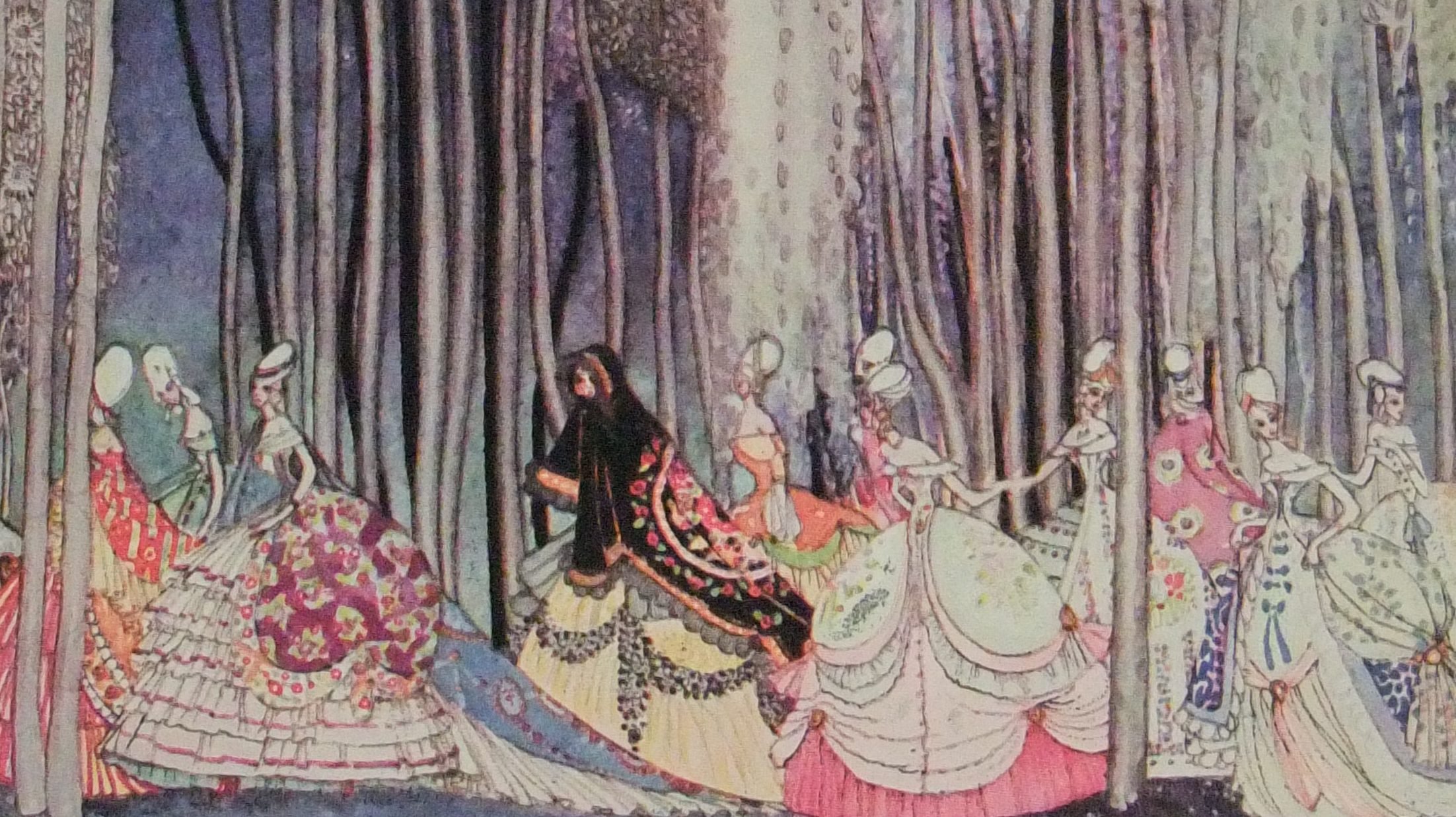
The princesses on the way to the dance, from Twelve dancing princesses and other fairy tales
In 1917 Nielsen returned to Copenhagen as the war ended and turned to stage design for the Danish State Theatre. There he developed a close friendship with the young actor and producer Johannes Poulsen, a pioneer of the Danish cinema. In 1919 they mounted a spectacular production of Aladdin at the Danish State Theatre. Nielsen designed the sets and costumes recreating the glories and wonders of the East, with its wealth of light and colour, of shadows dark and sombre. Together Nielsen and Poulsen produced and designed spectacular stage fantasies during the 1920s.
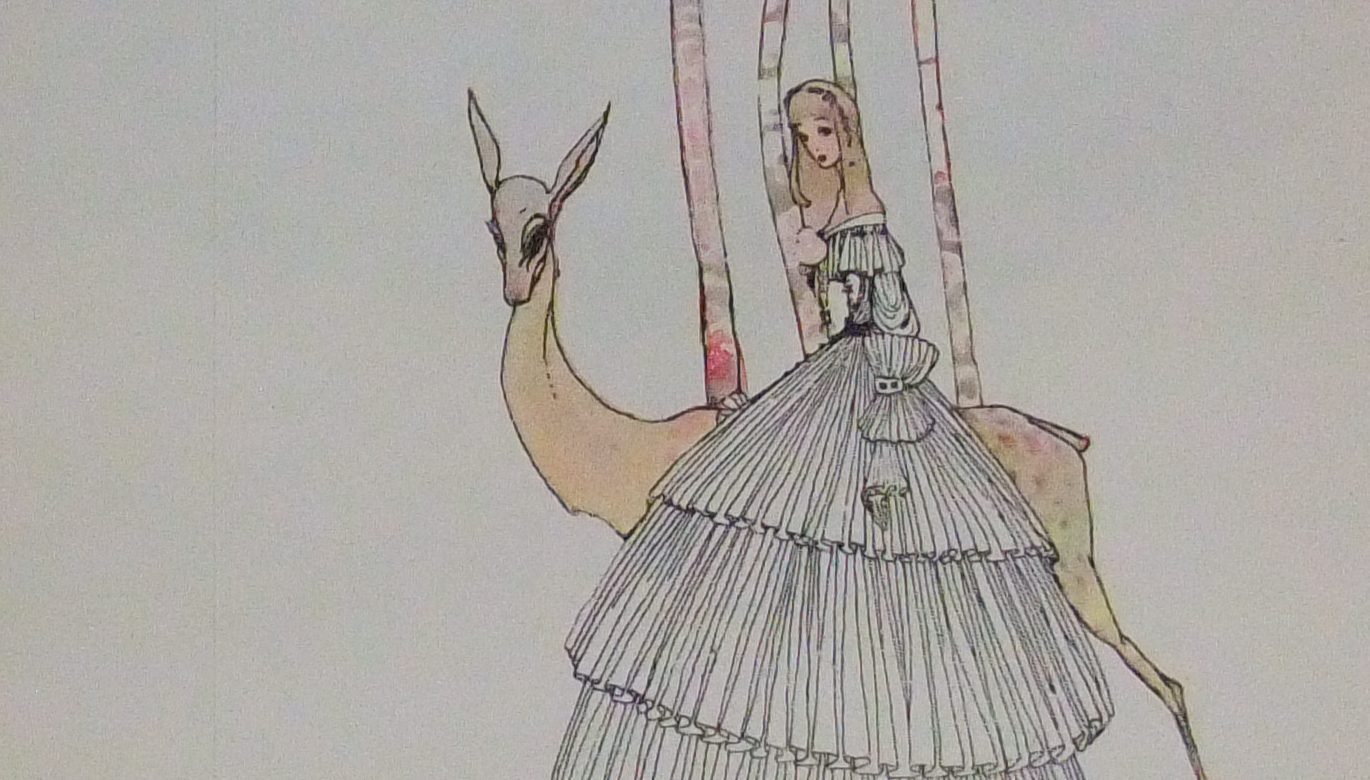
“It’s about the Princess, my daughter. She has not smiled for a whole year”, in John and the ghosts, from Twelve dancing princesses and other fairy tales
Between 1923 and 1925 Nielsen resumed publication of fairy tales through Hodder and Stoughton in London and benefited from their international distribution capacity. Twelve dancing princesses and other fairy tales was published in 1923. The six fairy tales in this collection were sourced from various publications and retold by Sir Arthur Quiller-Crouch, the Cornish poet, novelist and critic. The tale of the title came from Andrew Lang’s Red fairy book and was first illustrated by Nielsen In powder and crinoline.
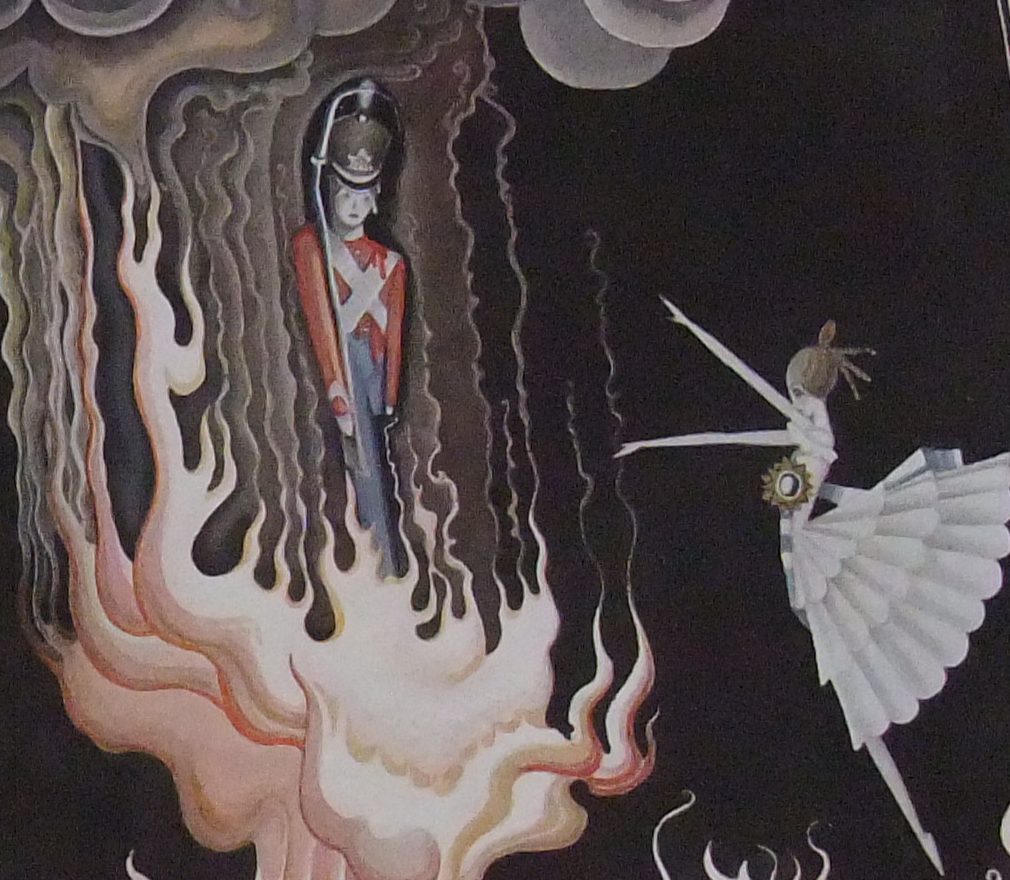
The hardy tin soldier, from Fairy tales from Hans Andersen Caption: ‘The draught of air caught the dancer, and she flew like a sylph just into the stove of the tin soldier.’
In 1924 Fairy tales of Hans Andersen was published after being held back by Hodder and Stoughton so as not to compete with their earlier edition illustrated by William Heath Robinson in 1913. The Nielsen volume contains sixteen fairy tales by Hans Christian Andersen with tipped-in frontispiece and 11 colour plates separated from the text by captioned tissues and includes black and white drawings throughout. The Library’s item is the first trade edition published after the signed Hodder and Stoughton limited edition. This edition eclipsed the earlier version illustrated by Robinson and became one of the best-known illustrated books of the Golden Age.
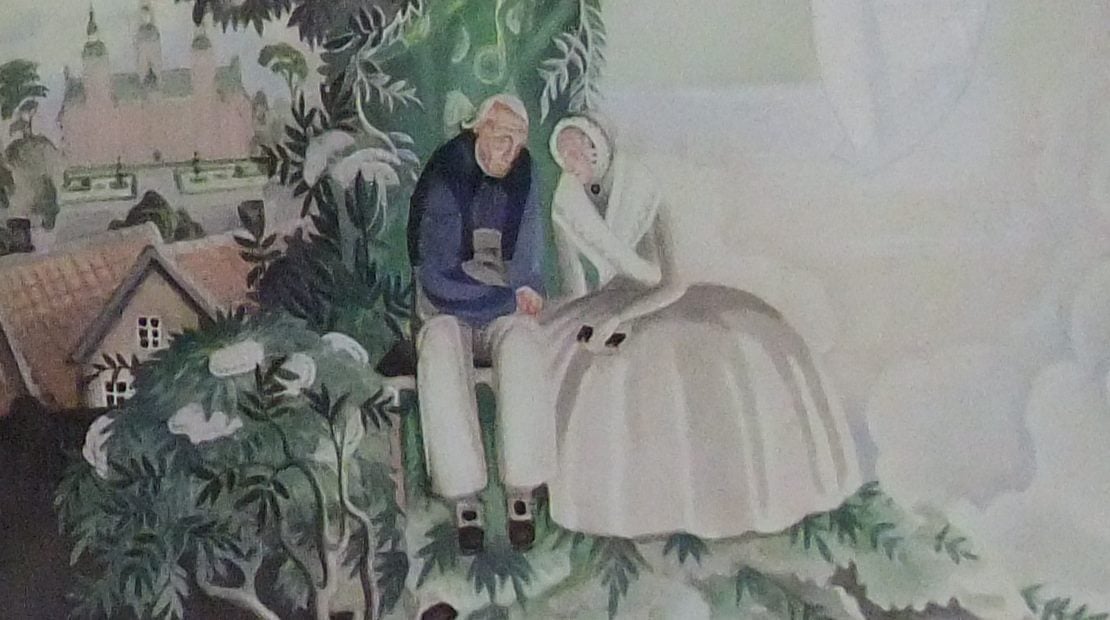
In the elder tree mother, from Fairy tales from Hans Andersen. Caption: ‘And in the midst of the tree sat an old, pleasant looking woman in a strange dress.’
Kay Nielsen’s illustrations for Hansel and Gretel show what a brilliant colourist he was and how his decorative style enabled him to produce images that were sometimes strikingly fantastic or bizarre. All his life he had an affinity for oriental imagery, and his works come nearest in quality to Middle Eastern or Persian designs. He was also a specialist in elaborate rococo motifs and stippling effects which are reminiscent of Aubrey Beardsley. His incisive line was uniquely his own and his depictions of fairyland less sombre than Rackham’s.

Hansel and Gretel, image opposite p 8
In the 1930s Nielsen moved to Los Angeles where he designed sets for movies and acted in small walk-on parts. He also took up illustration for the Disney Studios, however he found it hard to see his designs altered for the animation process. Nielsen was meticulous and couldn’t be hurried, and so a support system was set up to enable him to achieve Disney’s schedule. But Disney suffered a string of financial losses during 1940/41 and Nielsen was laid off on 23 May 1941, one of many layoffs that led to a long acrimonious employees strike at the studio.
The following 16 years were difficult for Nielsen and his wife as they lived a spartan existence with occasional commissions. After a series of failed business ventures he died in 1957, at the age of 71. The Golden Age of children’s book illustration had closed and though his work was unique he was not a self- promoter.
References
- The annotated Hans Christian Andersen, edited by Maria Tatar, WW Norton & company, New York, 2008
- Before the animation begins: the art and lives of Disney inspirational sketch artists, by John Canemaker, New York, Hyperion, 1996
- Golden Age of children’s book illustration, by Richard Dalby, O’Mara Books, London, 1991
- Hans Christian Andersen: the misunderstood storyteller, by Jack Zipes, Routledge, Abingdon, Oxon, 2005
- Illustrators: Kay Nielsen, JVJ Publishing Website
- Kay Nielsen, by Keith Nicholson, London, Coronet, 1975
- Original folk and fairy tales of the Brothers Grimm, translated by Jack Zipes, Princeton University Press, Princeton, [2014]


Thank you for this fascinating insight into this wonderful illustrators life and work.
Hi Lynette,
I’m glad you liked the blog. In fact I also found it interesting how WWI interrupted his incredible career illustrating children’s books and how after the war, he changed his focus. The illustrations in the blog are from our collection items and viewing the books in their entirety is worth it if you get a chance to visit.
cheers,
Juliet